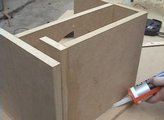Are You Car Audio Losing Bass?
So you've got your subwoofer system and you're pretty happy with the output you're getting. But are you getting all you can out of all you've got? The chances are that you're losing precious decibels and don't even know it. Several factors can cause a loss of bass and some are more extreme than others. Here's a some of the most common bass killers in car audio.
Body Rattle
Decibels are a measure of sound energy. You're most interested in the decibels that reach your ears. These decibels reach your ears by energizing (vibrating) the air between you and the subwoofers. The electrical energy of the amplifier is converted into the mechanical energy (movement) of the subwoofer and is then converted into acoustical energy in the air (decibels). But this energy can be lost along the way to body rattle. This is the shaking of the various vehicle panels by the subwoofer system. Energy wasted in vibrating these panels is going to be energy that won't be converted into sound energy.
The two main ways of fixing this problem are to dampen and stiffen the panels. The panels can be dampened by the addition various damping materials. This includes foams, cloth mats and sheet dampeners. The very common trunk rattle can also be helped by checking/changing the trunk gasket and tightening the trunk latch. Higher priced cars will not need as much dampening as an econo box because they are built with thicker panels and have more factory dampening.
Enclosure Panel Flex
Just as energy leaving the enclosure can be absorbed by panels so can energy within the enclosure. If your enclosure is built with inferior materials, too thin of material or just generally poorly built it will absorb some of the mechanical energy of the subwoofer which will result in less decibels. The cure for this is to make sure your enclosure is solid and leak free. Bracing should be used on long panels to prevent flex. MDF of an adequate thickness (generally 5/8"-3/4") should be used or sufficient layers of fiberglass for molded enclosures. Generally you need to have the enclosure built right the first time and it isn't something you can "fix later".
Cancellation
Cancellation occurs when a sound wave meets another sound wave with opposite phase (+ and -). This will cause the two waves to cancel each other out and the result is less or no sound. The biggest culprit is incorrect wiring of the subwoofers. This can be at the subwoofer, at the enclosure terminal cup or at the amplifier. If one woofer is firing forward while the other is firing backward the subwoofers will cancel each other out. This can also happen when two subwoofer that are firing in phase are point directly at one another. When their wave output meet you will get large peaks and valleys in the response depending on the distance apart and the frequency of the wave. Always double check your subwoofer wiring if you suspect phasing problems.
Location, Location, Location
It's been shown many times, including in the Advanced Enclosure Design and Fabrication video, that the placement of the enclosure can have a dramatic effect on the output of the subwoofer system. Differences of 12 decibels were recorded using the same subwoofer in different locations in the trunk. That's the equivalent of a 1,600% increase in amplifier power (four doublings). So experiment with your enclosure placement and ideally run the experiments before you design the enclosure.

You should also check out Advanced Enclosure Design and Fabrication. It covers designing enclosures using free computer software, maximizing the output of a subwoofer system, building the box like a pro and testing the output using inexpensive equipment. Click here.
Back to the Newsletter Archives Index